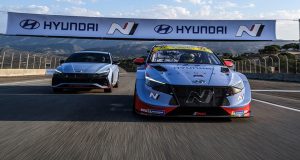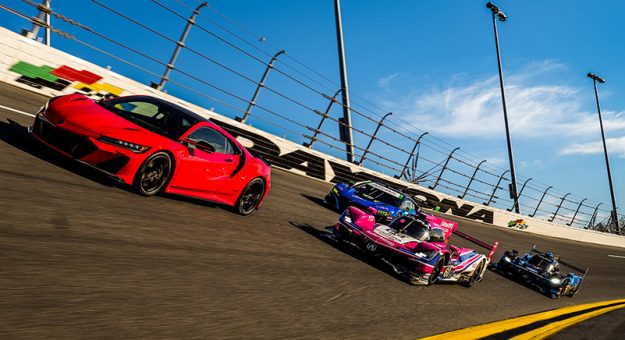Manufacturers Have Applied Numerous Road Car Developments to Their Race Cars
By David Phillips
DAYTONA BEACH, Fla. – Racing improves the breed. It’s a mantra nearly as old as motorsports.
Be it the first use of a rearview mirror on the Marmon Wasp piloted to victory in the inaugural Indy 500 by Ray Harroun, the disc brakes developed in the heat of competition in the 1950s, race-inspired independent suspension, keyless ignitions, composite materials and scores of other examples, innovation has beat a path from the track to the showroom. Even today’s most humble daily drivers bristle with technologies introduced and developed on the world’s racetracks.
And yet, such is the pace of contemporary automotive technology that the cross pollination between track and road is very much a two-way street. For example, ABS (antilock braking system) was, if not commonplace, widely available on passenger cars in the ’80s before finding its way into racing thanks, in part, to the reluctance of sanctioning bodies to take any element of the control of the car out of the driver’s hands (or in this case, feet) in favor of on-board computers. Indeed, to this day ABS is only permitted in the GT Daytona (GTD) and GT Daytona Pro (GTD PRO) classes of the IMSA WeatherTech Sports Car Championship.
But that doesn’t mean technology developed on road cars is nowhere to be found on IMSA grids. In a pleasingly ironic twist, for example, the rearview cameras found on the Chevrolet Corvette CR.8s are based on the technology initially developed for road-going ‘Vettes. Take that, Mr. Harroun!
And those Daytona Prototype international (DPi) Acura ARX-05s campaigned by Meyer Shank Racing and Wayne Taylor Racing? Their 3.5-liter turbocharged V-6s are derived from the production “J35” engine found in several Honda/Acura production vehicles (e.g., the Honda Ridgeline, Honda Pilot and Acura MDX).
Not surprisingly, examples of technologies and gadgetry flowing from road cars to race cars are most often found in IMSA’s various GT categories, which feature than a dozen automotive manufacturers in GTD and GTD PRO categories of the WeatherTech Championship as well as the IMSA Michelin Pilot Challenge Grand Sport (GS) and Touring Car (TCR) classes.

For instance, although Hyundai has enjoyed great success with its Veloster N TCR (sweeping the top three Michelin Pilot Challenge TCR spots in 2020), the marque added the Elantra N TCR to its quiver starting last season. The Elantra features production-based electric power steering and turbo/wastegate systems complementing its two-liter, turbocharged I-4 engine-based powertrain that is almost entirely production-derived.
Even Porsche – where race cars are designed concurrently with their road car siblings (and vice versa), and the 911 GT3 Cup and 718 Cayman GT4 RS Clubsport road and race cars were debuted to the public at the same time – utilizes the road car to race car technology transfer model at times. Case in point: The air conditioner used on the 911 GT3 R (featured in both GTD and GTD PRO) is pulled from Porsche’s road cars and adapted to the racing environment.
Although the GT classes may hold a substantial lead over the prototypes in the road car to race car technology transfer sweepstakes of 2022, that balance figures to change next year. With the debut of hybrid powertrain technology in the new Grand Touring Prototype (GTP) class, the manufacturers already committed (Acura, Audi, BMW, Cadillac, Porsche) will inevitably apply the lessons learned and, in many cases, the technology already available in new car showrooms to the prototypes that will set the overall pace in IMSA beginning with the 2023 Rolex 24 At Daytona.
And while that trend figures to accelerate as more manufacturers join the GTP ranks in the coming seasons, inevitably, innovation will also flow from the hybrid race cars to the hybrid road cars of the future in what amounts to a case study of how racing improves the breed. Still.
